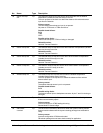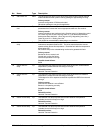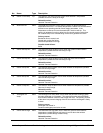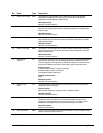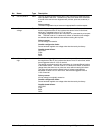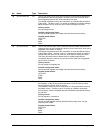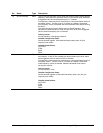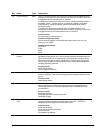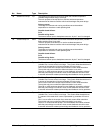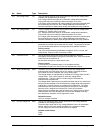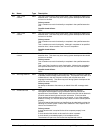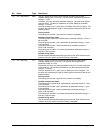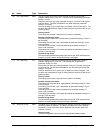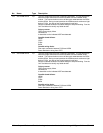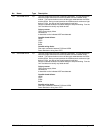
2-20
•
••
•
Chapter 2 Faults and Troubleshooting Innovation Series Medium Voltage GP Type - G Drives GEH-6385
No. Name Type Description
98 Ambient over temp Trip
The Ambient over temp trip fault occurs when the ambient temperature
(variable Bridge ambient temp) is too high.
The main purpose of the trip fault is to use the ambient temperature
measurement to detect a condition which could endanger the power bridge.
Primary causes:
The bridge environment and running conditions cause the ambient
temperature to rise above a safe operating level.
Possible board failures:
BICM
Possible wiring faults:
The thermal sensor input to backplane connector J4 pins 7 and 8 is damaged.
99 Ambient temp hot Alarm The Ambient temp hot alarm occurs when the ambient temperature (variable
Bridge ambient temp) is too high.
The main purpose of the alarm is to use the ambient temperature
measurement to detect a condition which could endanger the power bridge.
Primary causes:
The bridge environment and running conditions cause the ambient
temperature to rise above a safe operating level.
Possible board failures:
BICM
Possible wiring faults:
The thermal sensor input to backplane connector J4 pins 7 and 8 is damaged.
100 Phase A cur offset Trip The Phase A cur offset trip fault occurs when the phase A current offset
(variable Phs A current offset) is too large. The current offset threshold level is
1 percent of the rated shunt current (parameter IPN shunt size).
Phs A current offset is the output of an automatic current offset calculation.
The trip fault only occurs when the offset calculation is not active.
Phase A cur offset evaluates phase A current feedback information collected
while the power bridge is turned off, when current feedbacks should be zero.
It uses the information to detect power bridge and feedback circuitry problems.
101 Phase B cur offset Trip
The Phase B cur offset trip fault occurs when the phase B current offset
(variable Phs B current offset) is too large. The current offset threshold level is
1 percent of the rated shunt current (parameter IPN shunt size).
Phs B current offset is the output of an automatic current offset calculation.
The trip fault only occurs when the offset calculation is not active.
Phase B cur offset evaluates phase B current feedback information collected
while the power bridge is turned off, when current feedbacks should be zero.
It uses the information to detect power bridge and feedback circuitry problems.
102 Phase C cur offset Trip
The Phase C cur offset trip fault occurs when the phase C current offset
(variable Phs C current offset) is too large. The current offset threshold level
is 1 percent of the rated shunt current, represented by parameter IPN shunt
size.
Phs C current offset is the output of an automatic current offset calculation.
The trip fault only occurs when the offset calculation is not active.
Phase C cur offset evaluates phase C current feedback information collected
while the power bridge is turned off, when current feedbacks should be zero.
It uses the information to detect power bridge and feedback circuitry problems.



